|
From humble beginnings dating back to 1885, Pacific Beach has grown into one of the most desirable neighborhoods in San Diego. Along with Mission Beach, the area boasts one of the longest beaches on the west coast. A lot has changed since 1885. With each passing day Pacific Beach renews itself with new things to do, places to visit, and restaurants to try. We started Quicksand Escape Games in order to be part of the in-progress positive change to the community and provide the neighborhood with a friendly complement/alternative to a day at the beach or a night at the bar. Historically, Pacific Beach has hosted some unique activities that a current visitor or local may be surprised by. Some of the more notable attractions have included:
Today, there are less attractions like these in Pacific Beach as rents have increased and the neighborhood is thriving on it's outdoor activities like surf lessons, bike rentals and Segway tours as well as its huge, varied selection of places to get food and drink. Check out or other article to read more about some of the best restaurants in Pacific Beach.
With two escape rooms open in Pacific Beach and a third slated to open by the end of the Summer, we at Quicksand Escape Games hope we can become Pacific Beach's next Roxy Theater or "Pleasure Pier". A place to get out of the sun for a little while and be entertained in between craft beers and ice cream cookie sandwiches. 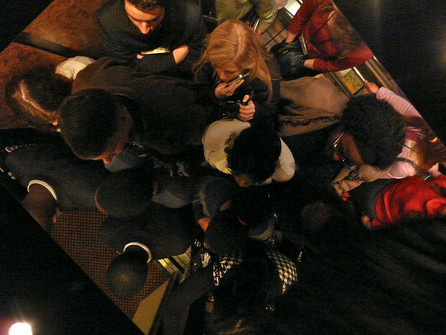 At our escape rooms, our rooms are limited to eight people. For private groups, we hesitantly allow up to ten. While our rooms are larger in size than many other escape rooms in San Diego and can fit far more than 8-10 individuals, there is a limit to how many people can be active at once, no matter what room you're in. Have you ever heard the joke, "How many BLANK does it take to screw in a light bulb?" Well imagine trying to cooperatively screw in a light bulb with 15 people. It's not only close to impossible to involve 15 people in the process, but it would be very unpleasant at the same time. When escape rooms like us build rooms, we build them with a finite number of puzzles, theoretically aimed at a set number of people completing them all within an hour. There is certainly an optimal range. From our research, that sweet spot is 2-8 people. We've had some couples speed through our room and we've had groups of eight limp to the finish, but on average 2-8 is about right. Escape room companies that allow 2-15 people in a room are doing you a disservice. Is it possible to design a single game (series of puzzles) that 2 or 15 people could solve while remaining active? If you've found one, let us know! If the room TRULY had enough puzzles in it to engage 15 people for 60 minutes, then there'd be no way for 2-8 people to come close to getting through it. Or, it's the opposite case. The escape rooms are designed for 2-8 people but companies pack in an extra seven heads for more revenue. In other words, either the rooms are impossible for any small to medium size group or you have escape rooms where half of the participants are standing around doing nothing. We at Quicksand Escape Games have played a lot of escape rooms and haven't found a game that keeps 12-15 people engaged. But imagine one existed. And further imagine that the company hosting the 12-15 person game is popular enough to fill 12-15 slots per session so that the difficulty level is just right each time. Got that image your head? Did you notice that there were clusters of 3 or 4 people working on different things at once? Hardly the collaborative team-building environment you hoped for when you booked the room for ~$400 for the hour. We feel the best solution for hosting a group larger than 10 is to split up into two+ groups. At Quicksand Escape we've hosted corporate groups that have split up and done different experiences simultaneously and we have hosted back to back games of the same experience. Everyone gets to be involved. Everyone has a fun time. When you choose different games, it allows the opportunity for your group to return and swap rooms. When you choose back to back games, you are all able to debrief on the common experience. It allows you to still compare and contrast how you handled the same puzzle. If we packed 15 of you in the room, there would be no common experience besides discomfort. Most participants wouldn't have a clue how the majority of puzzles were solved because they were in the opposite corner trying to remember if they fed their goldfish that morning. Imagine tying to watch a movie with 15 people, except you split into groups of 3, watch different parts of the movie and attempt to piece the story back together afterwards. In conclusion, escape rooms are businesses and making money is key to staying afloat. But as profitable as it may be to squeeze in extra people, it wouldn't be fair to the participants or be true to the experience we intended to deliver. There is a preconceived notion that escape rooms are scary. And some of them are. But the rooms at Quicksand Escape Games in San Diego are NOT scary! Woo-hoo!
This is what happens when we begin to tell people about our business: - "It's an escape game." - "What's an escape game?" - "You're locked in a room and have an hour to esca---" - [Eyes widen, Breath stops, Head shakes no] "No way, that's not for me." - "No it's not scary though. It's fuuuun." - [I'm not listening to you anymore. I don't care that you said it's not scary. Just like going to a haunted house is fuuuun. Ya right, I'm not stupid! How am I going to get out of this conversation? Just smile and say 'I'll think about it'...that DOES sound fun! 'I'll definitely go' (lie)...'my friend would love that, they'll definitely go'...'hey look, what's that?!...] We get it. Scary sucks. We understand when someone tries to tell you that haunted houses are fun, when they're definitely not fun. We aren't a haunted house. We hate haunted houses. We've had nightmares after reading the synopsis to a scary movie. Therefore, we would never design a scary escape room. Our themes are exciting, nostalgic, cute, fun, and definitely not scary. Do NOT think Saw or Taken. There will be no zombies chasing you, no being blindfolded, no creepy soundtrack. There will be a 1920s Speakeasy with jazz music and beer (not real beer)! There will a 1950s Diner with a jukebox and an old coke machine! And you will try to escape before the mob boss or the police arrive! As for the "thrill" of our escape games? There may be screaming, there may be laughing, there may be jumping up and down. There will be adrenaline, suspense, and exhilaration. But the thrill doesn't come from a zombie chasing you or a supposed spirit in the room with you. It comes from discovering the clues and solving the puzzles. The thrill comes from racing the clock to be able to experience as many puzzles as you can in one hour. Kind of like when Ferris Bueller and Cameron try to experience as many activities as they can in one school day. When Ferris races his sister home at the end of the movie, that wasn't scary, it was fun! Our rooms are designed for friends and families looking to have a good time, whether they are on vacation in San Diego, celebrating a friend's birthday, or with their coworkers for a team building event. We've had grandmothers in their 70s, young children, and everyone in between. And they all love it! If you're looking for something different and fun to try, try an escape game with us. There's a reason we call our games "escape games" and not "escape rooms". No one wants to be locked in a room, unless it's with their awesome friends playing an awesome game. Book a game now. Ferris would do it. Cameron wouldn't. Be a Ferris. June Gloom in San Diego is no joke. We've lived in Pacific Beach for almost five years and most of the year, it's absolutely wonderful living on/at the beach. It's easy to forget how bad May Gray June Gloom is until it is May and June. Usually you think of clear blue sunny skies when you think of San Diego, but there's a certain phenomenon that occurs this time of year when the clouds take over.
Every morning you wake up to a dark gloomy marine layer over the ocean and beach towns. Every afternoon you wait and wait for it to break. It's hard to get out of bed, let alone go to the beach and be outside. Sometimes you yearn for sun so badly you consider driving down the 8 for some rays, then you laugh at yourself for considering driving down the 8, partly because you don't have the motivation to go anywhere because of the June Gloom, and partly because it's driving down the 8. Sometimes May Gray June Gloom becomes No Sky July and Fogust, and before you know it, it's Autumn and football is starting and you realize you never really went to the beach this summer. Anyway, if you find yourself in this position as a local or if you booked a vacation to San Diego this time of year without knowing about the local weather, you may be looking for an activity to escape the gloom. Escape games are perfect for that! They are played indoors with no windows so you will have no idea how unsunny it is in the outside world. Get your games in now so you won't feel bad about being indoors when the sun actually returns. Or if you're visiting "sunny" San Diego, you can still be able to post a picture of you having a good time on vacation. Who knows? You may even walk into the game out of the gloom, and walk out of the game into sunshine! And that's the power of escape games! Have you played an escape game before? If so, you may have come across the following personalities on your team. Or you may be one of them! Are you a first timer? Which one do you think you'll be?
1. The Vet These are the players that have done 10, 20, 50, 100+ games. They've seen a lot of puzzles and aren't afraid to tell you exactly how to play the game, or that this must be something and that is definitely nothing. 2. The Hint Fiend These folks just want to win, even if that means having the escape game's moderator tell them everything they need to know. They can be found repeating their mantra of "We Need a Hint!" before trying to think about a solution or search for a clue. 3. The Clock Watcher How much time is left to escape? The 'Clock Watcher' knows! She or he will make sure the rest of the group knows how much longer you have, at the sacrifice of helping to solve any of the puzzles. They'll probably be found in the corner or worse, in the way, staring at the timer. 4. The Clue Hoarder This escape room teammate wants to escape...but as long as he or she is the one to save the day. Missing that final piece of the puzzle? Where did that cipher go? Check the 'Clue Hoarder's' pockets, as they probably found it 10 minutes ago and didn't tell anyone. 5. The Last Minute Hero Similar to the 'Clue Hoarder', the 'Last Minute Hero' is in it for the glory. But instead of withholding information, this person simply waits until the puzzle is solved, grabs the lock, and triumphantly announces "I got it!" as they input the code that the rest of the team just figured out. 6. The "I Didn't Listen to Any of the Rules" Guy "Don't take anything off the walls." (Immediately removes everything from the walls.) "No need to move the furniture." (Stacks the furniture in the corner.) "Nothing needs to be forced." (Breaks everything.) 7. The Director This escape room commander typically stands in a central location, where clues are being collected, and makes sure everyone else is carrying out their ideas. They'll shout things like "Check the cabinet!" and "Bring that here." 8. The Admin This escape room player keeps the clues organized, knows what locks are left, does the math if needed, and is probably the one who booked the escape game for everyone. 9. The Guesser "Try 1-2-3-4!" "Why?" "I dunno..." With little thought, they shout random numbers to keep things interesting and maybe one day, in some escape room, somewhere, it will work! 10. The Re-Run These optimists don't quit. They can be found searching in the same spots over and over again. Nothing in that drawer the first time you checked? Maybe if you check four more times, something will turn up. 11. The Quiet Observer This silent escape room participant isn't there for the glory, to show-off, or even escape...in fact, they aren't really sure what is going on. Which one are you? Book now and find out. If we missed an escape game personality, let us know in the comments. What makes the best escape room? There are two factors.
1. Game Play. This refers to the flow, timing, and intangible attributes of the game. This includes the plot and backstory as well as how the various physical elements (clues, ciphers, etc) fit together as part of the game as a whole. When an escape room has good game play you will feel involved, excited, connected and the hour will fly by. If the room has bad game play, you will feel overly-frustrated, confused, idle, and you start to lose the feeling of immersion. 2. Atmosphere/Aesthetics. This other half of the experience refers to how real does this all look and feel. Even escape rooms with basic themes can have good aesthetics. There are office-themed games that have real cubicles, working computers, phones etc. Then there are office-themed escape games that put you in a near-empty room with a couple of Ikea desks. Good aesthetics will look authentic, curated, match the theme, and will add a a new level to the participants experience that the game play cannot. Bad aesthetics are sterile, dull, sparse and make the whole design seem cheaply slapped together. The escape room industry is still new. New escape rooms pop up all the time with what seems like low barriers to entry. While, yes, an individual can raid a thrift store and make an escape game in some office space over a weekend with a permanent marker and duct tape, the best escape rooms take months to design. Unfortunately, for many people who have tried just one or two escape games, they may have never experienced an escape room that has both good game play and good aesthetics. As the industry grows, so will the standards and the baseline is for quality. What do you think makes the best escape room? If you're ready to experience the best escape room in San Diego, book now! What is an escape game?
Maybe you've heard of an escape room? Escape the Room? Puzzle Room? Exit Game? Room Escape? No matter the name, the concept is the same. An escape game is a real-life experience where you and a group of other players are literally locked inside a room and have 60 minutes to escape. (Note: Some rooms only give you 45 minutes...lame). How do you escape? No, it does not involve an axe or battering ram. You escape by working together to find elements, follow clues, and solve puzzles within the room. Most games, the good ones, have a flow to the process. The elements start separately and eventually converge into the finale where you burst through the exit door to freedom! This is how the whole thing works: 1. You book a game online for a specific day/time. You can book for yourself, you and your better half, a group of friends, teammates, coworkers, your nuclear and/or extended family, etc. Booking is required in advance to reserve your spots. 2. You'll arrive about 15 minutes before the start of your game to check in and meet your team. The moderator/game master/employee will explain the rules, go over any game-specific information, and send you in. The rules are usually standard; Leave your stuff in the locker in the lobby, don't force anything (nothing more than a finger's strength), and don't climb on the furniture are the basic ones. 3. Now that you're in the room and the clock is ticking (most games use a monitor in the room to keep track of the time and give you hints), you need to start searching. Look everywhere! Triple-check all drawers and cabinets. Look on top of things, below things, inside things. How many locks are there? Which have numbers? Which have letters? Collect everything you find and lay it out somewhere to assess. 4. Start assessing! Did you find multiple of something? Are there numbers on that thingy? What do the different colors mean? Does this belong in that contraption? Communication is key! The beauty of playing with a group is that each mind looks at things a little differently. You noticed the colors, but maybe someone else noticed the shapes. There will be some false information and 'red herrings' so don't get overly focused on one thing. If your'e stuck, let someone else have a try. 5. Check the time and keep moving. An important thing to remember is to never lose a sense of urgency in the game. Do you feel like you are almost done, but there are still 30 minutes on the clock? You're probably not as close as you think... 6. Eventually, time runs out or you escape. It's one or the other. Either way, things aren't over. You'll exit to the lobby and typically take a picture of triumph or a photograph of shame. But the best part is, you probably won't be able to tell the difference because you're smiling in both scenarios. 7. Last but far from least, you debrief. This is where you break it all down with your group. This is arguably just as fun as playing. In fact, you'll likely play it through all again in your conversation. This can last five minutes or it can last hours. The better the game, the more you'll have to talk about! In the end, you have to play to really understand it - the experience is like nothing else you've tried. |
Quicksand Escape GamesSan Diego's Favorite Escape Games Archives
May 2023
Categories |
San Diego's Favorite
|
Contact Us
|

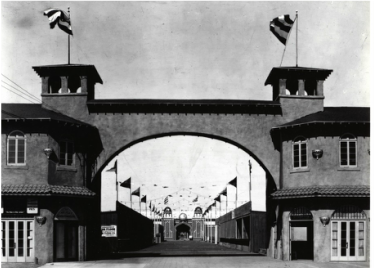
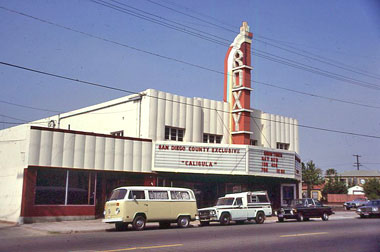
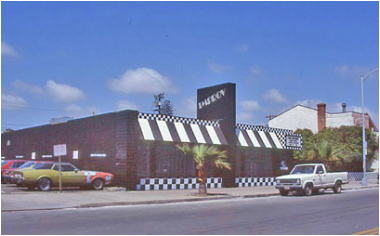
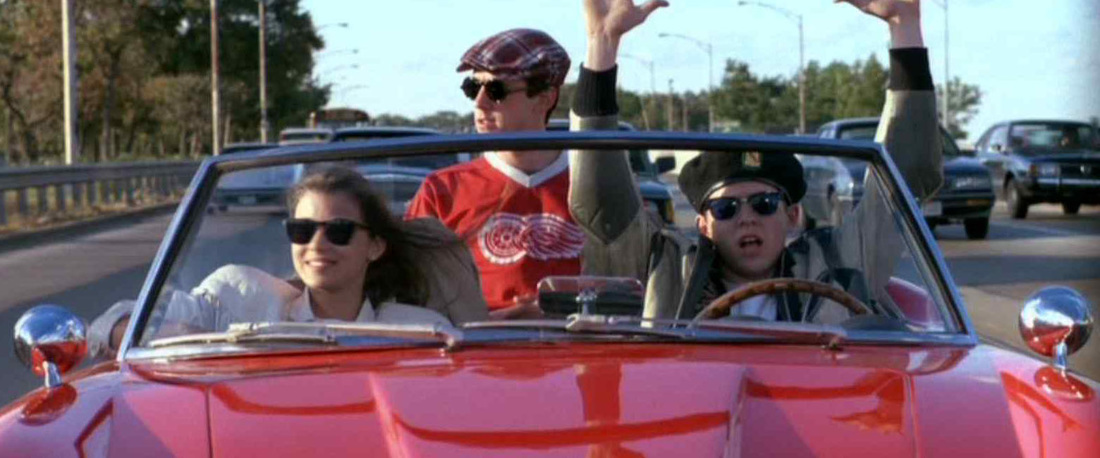


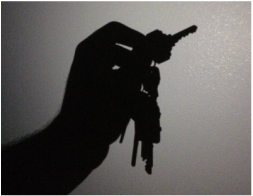
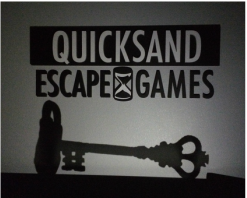
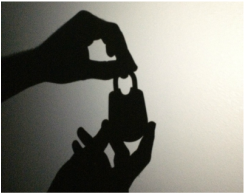
 RSS Feed
RSS Feed
